The Mandarin Duck is a colorful duck species that comes from Asia. People love their beautiful plumage, and because of this zoos and private collectors keep Mandarins across the globe.
In fact, people keep them so frequently that escapees have established populations in several places outside of their native range! Read on to learn about the Mandarin Duck.
Description of the Mandarin Duck
Like most ducks, male Mandarins are much showier and more colorful than females. Females of this species have primarily grey and brown plumage, or feathers. Males have a beautiful pattern of iridescent red, brown, orange, green, and more. During the breeding season, the male also sports a “sail” of feathers over his back.
Females are slightly larger than males. As a whole, the species generally measures between 8 and 10 inches long. Most Mandarin Ducks weigh between 1 and 3 pounds.
Interesting Facts About the Mandarin Duck
These birds are true showstoppers. Learn more about what else makes Mandarin Ducks so unique below.
- Partners – Pairs of Mandarins are quite picky about their mates, and before breeding they perform elaborate dances and courtship displays. It’s important to choose the right mate, because these birds continue breeding with the same partner for several seasons!
- Perching Group – Researchers classify Mandarin Ducks as “perching ducks.” All ducks in this group have the unique ability to perch high in trees. Some other perching ducks include wood ducks, Muscovy ducks, a few species of teals, and more.
- Duck Groups – Some other duck “groups” include sea ducks, dabbling ducks, and diving ducks. Sea ducks spend much of their time in saltwater environments or the ocean. Dabbling ducks forage by flipping upside down and reaching down with their long necks. Finally, diving ducks dive all the way underwater and swim about in search of food.
- Free Falling – Like many other perching ducks, this species lays its eggs in tree cavities or nest boxes. When the ducklings hatch, they don’t wait until they can fly to make the leap from their high nest. These intrepid babies safely jump to the ground, where their mother leads them to the water.
Habitat of the Mandarin Duck
This duck species lives in riparian habitats alongside rivers and streams. Their aquatic ecosystems must have forest or woodland very close because they only nest in tree cavities.
Outside of breeding season they also utilize marshes, wetlands, flooded pastures, and rivers. Most Mandarins live near sea level, but they occupy regions up to 5,000 ft. above sea level.
Distribution of the Mandarin Duck
The native range of this species spans from southeastern Russia through eastern China and into North Korea, South Korea, and Japan. These ducks breed in China, Japan, and Siberia. They spend their winters in southern China and Japan.
Non-native populations live in several different regions. Humans have established populations in various parts of Europe, and some regions of North America. Primary non-native populations include birds in Britain, Germany, and the western United States.
Diet of the Mandarin Duck
Mandarin Ducks eat both on land and in the water. These ducks are omnivores, and they eat a combination of plants and small creatures. They feed on a variety of plants, invertebrates, and small fish. Plants make up most of their diet, and they eat a wide variety of seeds, grains, rice, and more.
During the spring and summer these ducks feed more heavily on invertebrates and small animals. Some of their favorite prey items include snails, insects, larvae, worms, frogs, and more.
Mandarin Duck and Human Interaction
Though these ducks have high population numbers, and the IUCN lists them as Least Concern, their range and available habitat is in severe decline and their populations are decreasing.
Throughout their natural range, humans are cutting down the forests that these birds rely on to reproduce. People also capture this species to sell them or hunt them as trophies, but they do not eat their meat.
Domestication
Humans have not domesticated this species in any way. They do, however, keep them as pets in some places.
Does the Mandarin Duck Make a Good Pet
Generally speaking, this duck does not make a good pet. They are not particularly friendly, and they are somewhat difficult to breed. However, some people experienced with poultry do keep them as ornamental or breeding birds.
Mandarin Duck Care
Zoos house Mandarin Ducks in large aviary-style enclosures. Sometimes these enclosures are so large that people can walk through them! The aviaries contain many different trees, bushes, shrubbery, and water features like ponds, streams, and waterfalls.
Zookeepers feed these ducks a variety of different items. Their diets contain grains, seeds, plants, insects, small fish, and pelleted duck feed. Zoo veterinarians monitor the ducks’ health and change their diet according to each individual, the season, and if they are breeding.
Behavior of the Mandarin Duck
The behavior of thee ducks varies based on their region or location. Throughout most of their native range, Mandarins migrate seasonally to breed or avoid harsh weather.
Most of the year, these ducks are social and forage or travel in groups known as flocks. During the breeding season pairs break off from the flock, and rejoin when they migrate.
Reproduction of the Mandarin Duck
A Mandarin Duck pair will breed for several seasons in a row, but they do not necessarily mate for life. After mating, the pair searches for a good nest location in the trees.
Once the female finds a suitable cavity, she lays about 10 eggs. Incubation lasts about a month, and the ducklings jump from their nesting hole when they are just 1 – 2 days old.
Once they leave the nest, the mother leads the ducklings to the nearby water. Females lead their young to food and protect them, but the ducklings eat the food and swim all on their own. After about a month and a half the ducklings fledge and fly off to form their own flocks.


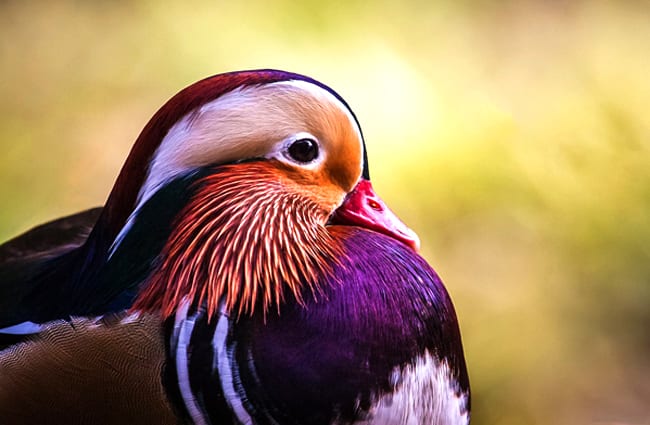
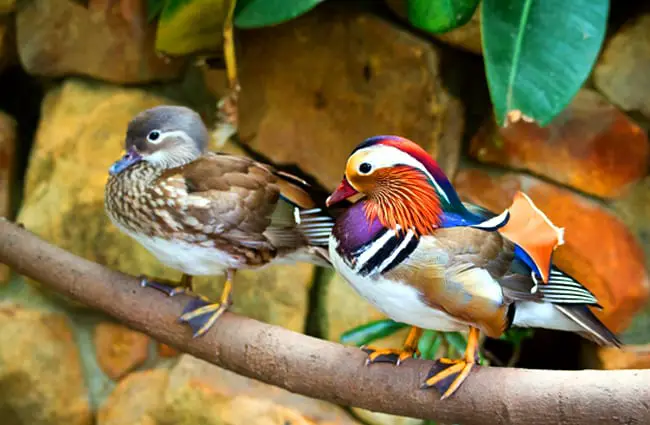

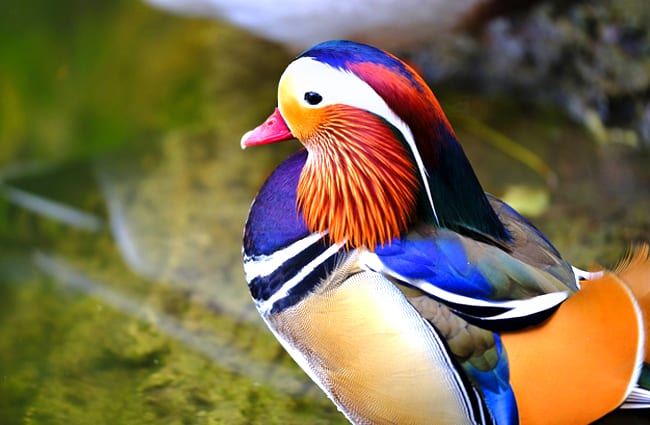
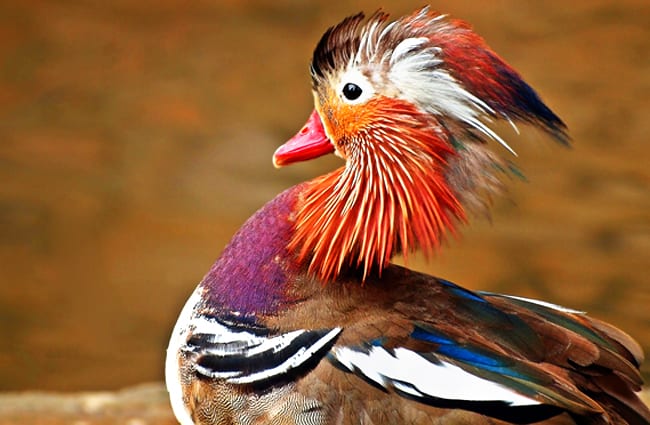
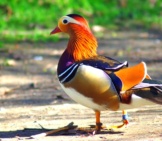
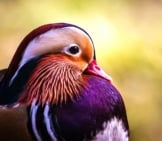


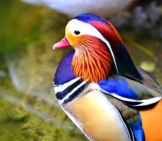
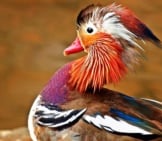
![Red Angus Closeup of a beautiful Red Angus cowPhoto by: U.S. Department of Agriculture [pubic domain]https://creativecommons.org/licenses/by/2.0/](https://animals.net/wp-content/uploads/2020/03/Red-Angus-4-238x178.jpg)




![Red Angus Closeup of a beautiful Red Angus cowPhoto by: U.S. Department of Agriculture [pubic domain]https://creativecommons.org/licenses/by/2.0/](https://animals.net/wp-content/uploads/2020/03/Red-Angus-4-100x75.jpg)

